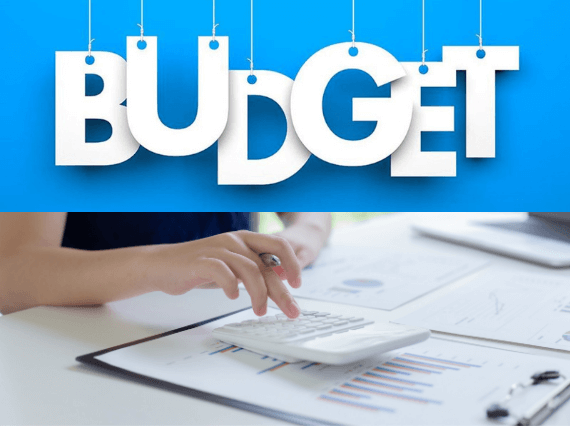How to Make a Personal Budget with Easy Steps? If you want to control your spending and work towards your financial goals, then you need a budget.
A personal or family budget is a summary that compares and tracks your income and expenses over a defined period.
While the term “budget” is often associated with restricted spending, a budget is not restrictive to be effective.
A budget will show you how much money you expect to bring, then compare it to your essential expenses – such as rent and insurance – and your discretionary expenses, such as entertainment or eating out.
What does a Budget
A written monthly budget is a financial planning tool that allows you to plan how much you will spend or save each month. It also allows you to track your spending habits.
Although budgeting may not seem like the most exciting activity (and for some, it is really scary).
This is an important part of keeping your financial house in order. This is because the budget depends on balance. Know about What Are Gross Incomes in Detail?
If you spend less in one area, you can spend more in another, save that money for a big purchase, build a “rainy day” fund, increase your savings, Or can invest in building wealth.
In the end, the result of your new budget will show you where your money is coming from, how much it is, and where it all goes every month. here How to Make a Personal Budget with the Easy Steps following.
How to Make a Personal Budget with Easy Steps
1. Gather Your Financial Paperwork
- Bank statements
- Investment accounts
- Recent utility bills
- W-2s and paystubs
- 1099s
- Credit card bills
- Receipts from the last three months
- Mortgage or auto loan statements
If you want to use any information about your income and expenses. One key to the budget-making process is to create a monthly average. The more information you can dig up, the better.
2. Calculate Your Income
How much income can you expect every month? If your income is in the form of a regular salary, where taxes are automatically deducted, then it is fine to use the net income (or take-home pay) amount.
If you are self-employed or have a source of income, such as child support or social security, include these. Enter this total income as the monthly amount.
3. Create a List of Monthly Expenses
Write a list of all the expenses that you will incur during a month. This list may include:
- Mortgage payments or rent
- Car payments
- Insurance
- Groceries
- Utilities
- Entertainment
- Personal care
- Eating out
- Childcare
- Transportation costs
- Travel
- Student loans
- Savings
Use your bank statement, receipts, and credit card statement for the last three months to identify all your expenses.
4. Determine Fixed and Variable Expenses
Fixed expenses are mandatory expenses that you pay the same amount for each time.
Include items such as mortgage or rent payments, car payments, set-fee internet service, garbage pickup, and regular childcare.
If you pay with a standard credit card, include the amount and any other necessary expenses that remain the same from month to month.
If you plan to save a certain amount or repay a certain amount of debt each month, then savings and debt repayment are also included as fixed expenses.
Variable expenses are the type that will change from month to month, such as:
- Groceries
- Gasoline
- Entertainment
- Eating out
- Gifts
Begin by specifying an expense price for each category, starting with your fixed spending. Then, estimate how much you will have to spend per month on variable expenses.
If you’re not sure how much you spend in each category, review your last two or three months of credit card or bank transactions to get a rough estimate.
5. Total Your Monthly Income and Expenses
If your income exceeds your expenses, then you are off to a good start. This extra money means that you can invest money towards areas of your budget, such as retirement savings or paying off debt.
If your expenses are more than your income, it means that you are overspend and need to make some changes.
6. Make Adjustments to Expenses
If you are in a situation where spending exceeds income, find areas in your variable expenses that you can deduct. Look for places where you can reduce your spending – like eating less – or ending a category – like canceling your gym membership.
Aim to equalize your income and expenditure columns. This equal balance means that all your income is calculated towards a specific expenditure or savings goal.
How to Use Your Personal Budget
After you set your budget, you must track and continue your expenses in each category, ideally on each day of the month.
The same budget spreadsheet or app used to create your budget can also be used to record your spending and income totals.
Recording what you spend over a month will save you from overspend and help you identify unnecessary spending or problematic spending patterns. Take a few minutes each day to record your expenses rather than closing them until the end of the month.
Budgeting Tips
- If you work on commission, be aggressive in saving to help cover periods when the market is slow.
- If you have cash flow issues, because you only paid once a month, divide that payment by weeks and save the cash you have made to spend in a separate account for the remaining cash while you Till you don’t need it.
- Pay by credit card only when you have money to pay it off at the end of the month. Otherwise, you have to pay interest above the price of what you have bought.
- Adjust your budget monthly if you find that you have underestimated your expenses. Keep track of large expenses that only occur every few months, such as insurance payments.
- If you overspend in certain categories, use budget hacks such as switching to a cash-only budget.
- Once your expenses fall below your income, budget towards savings goals before increasing your expenses.
- Take time to learn other financial skills to improve your financial literacy and make your money harder for you.
READ ALSO: What Is a Portfolio? And How to Build a Portfolio








